Error de formato de correo electrónico
emailCannotEmpty
emailDoesExist
pwdLetterLimtTip
inconsistentPwd
pwdLetterLimtTip
inconsistentPwd

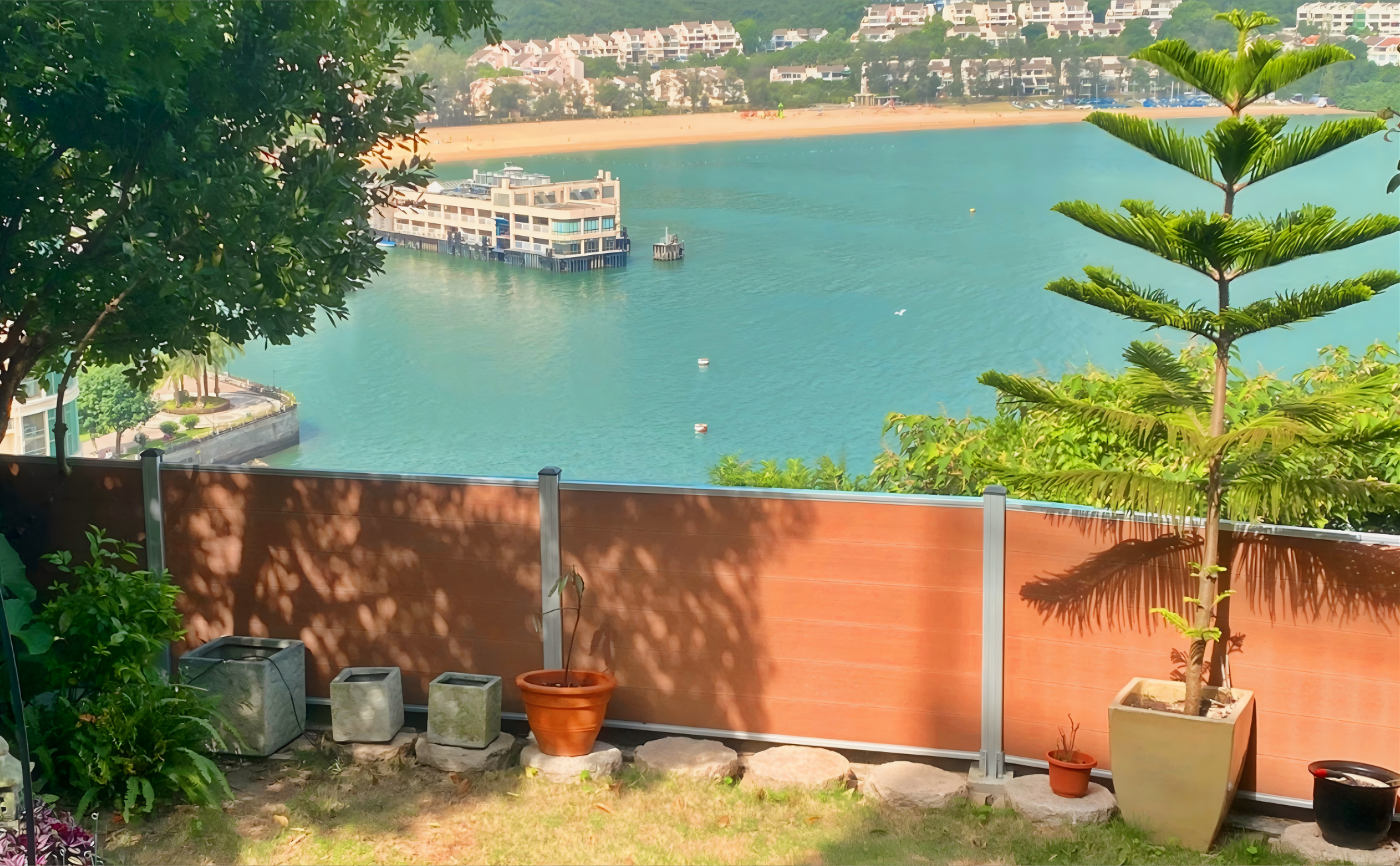
Let’s face it—nobody thinks about their fence until the wind knocks it down. And then you’re left with a mess to clean up and a hefty repair bill. The truth is, wind is one of the biggest threats to any fence. Without proper installation and materials, even the best-looking fence can end up leaning, breaking, or completely collapsing in the face of strong winds.
Wind resistance isn’t just about avoiding disaster during a hurricane; it’s about ensuring that your fence can withstand everyday gusts that might not seem like a big deal—until they are.
At MecoFence, we don’t just rely on manufacturer claims or guesswork to determine how strong our composite fences are. We put them to the test in real-world conditions that mimic extreme weather, including high winds. In some of our tests, we’ve used an airboat to generate wind speeds up to 120 mph—similar to what you’d experience in a severe storm or hurricane.
Here’s what we found:
The depth at which your fence posts are set is critical. Posts buried at least 3 feet into the ground are far more stable than those set only 2 feet deep. The deeper the post, the more resistance it has to the forces of wind pushing against it. This is especially important in areas with sandy or loose soil, where shallow posts can easily get uprooted.
There’s a common belief that setting posts in concrete is the gold standard. But in our tests, driven posts—those that are hammered deep into the ground without concrete—often outperformed concrete-set posts. Why? Driven posts allow for slight movement, which helps absorb wind pressure, whereas concrete can crack and break under stress, leaving the fence vulnerable.
In high-wind areas, reinforcing your posts with steel or aluminum cores can add significant strength. MecoFence composite fence panels are designed to accommodate these reinforcements, giving your fence the backbone it needs to stand up to the elements. The stronger the core, the better your fence will perform in tough conditions.
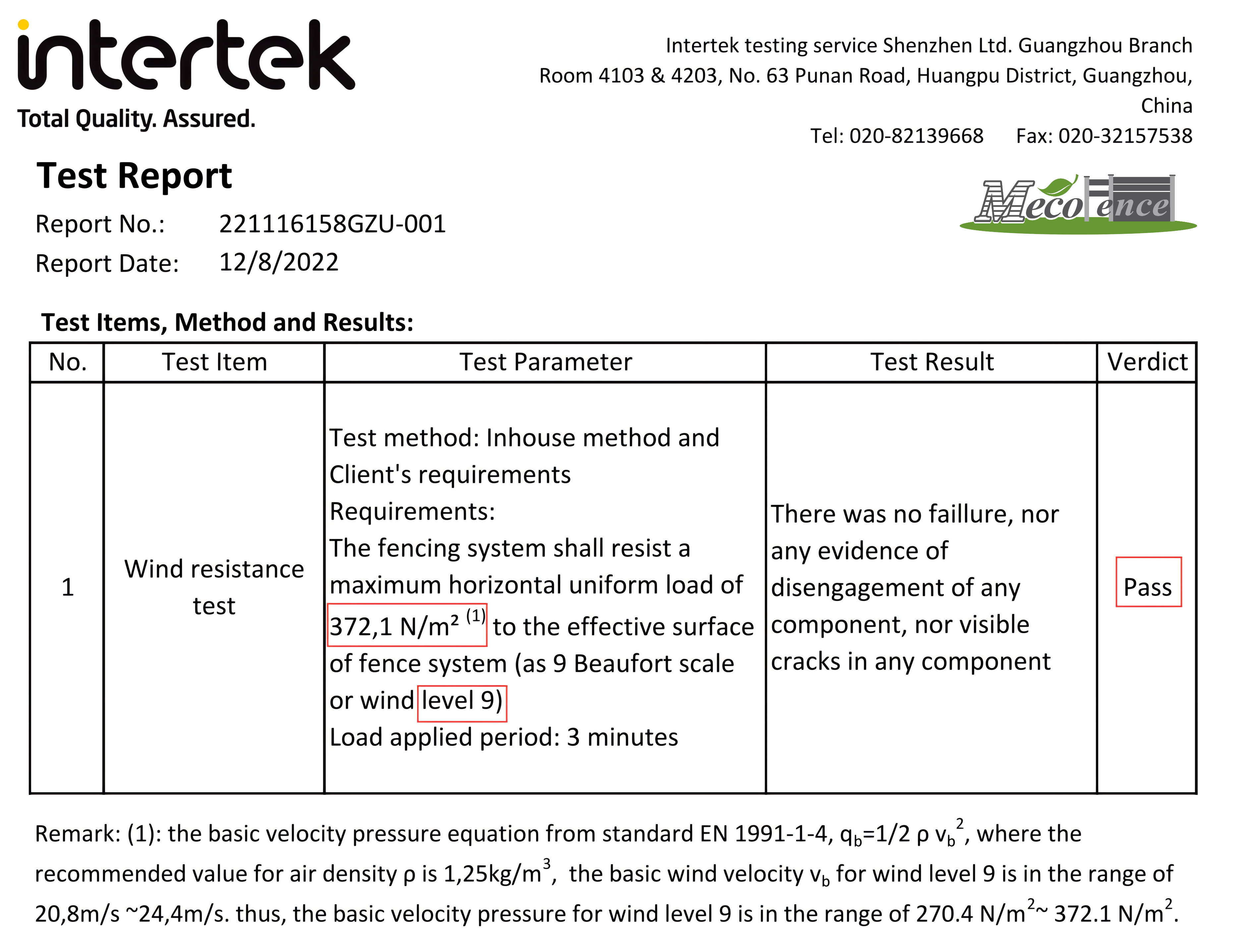
MecoFence is all about combining beauty with brawn. Our composite fences aren’t just attractive—they’re built to withstand whatever Mother Nature throws at them. Here’s why MecoFence is your go-to choice for wind-resistant fencing:
Our composite fences are made from wood-plastic composite (WPC), a blend of natural wood fibers and plastic that mimics the look of wood while offering superior resistance to rot, warping, and insects. WPC fences don’t absorb moisture like wood, which means they won’t weaken or break down over time—even in wet, windy conditions.
We offer steel-reinforced posts that are driven deep into the ground, providing the stability needed to keep your fence upright during strong winds. These reinforcements are crucial in preventing bending, cracking, or uprooting during a storm. In our tests, steel-reinforced posts significantly outperformed concrete-set posts, making them the ideal choice for wind-prone areas.
MecoFence’s modern fence panels are designed with wind resistance in mind. The modular design allows wind to pass through the fence while still providing privacy. Plus, our fences can be customized with additional rails and reinforced corners to handle even higher wind loads.
If you plan to install a fence in a windy area, it’s important to do it right from the start. Here are some practical tips to ensure your fence stays standing:
Make sure your fence posts are set at least 3 feet deep. The deeper the posts, the more stable your fence will be. This is especially crucial in areas with loose soil, where shallow posts can easily shift or tilt.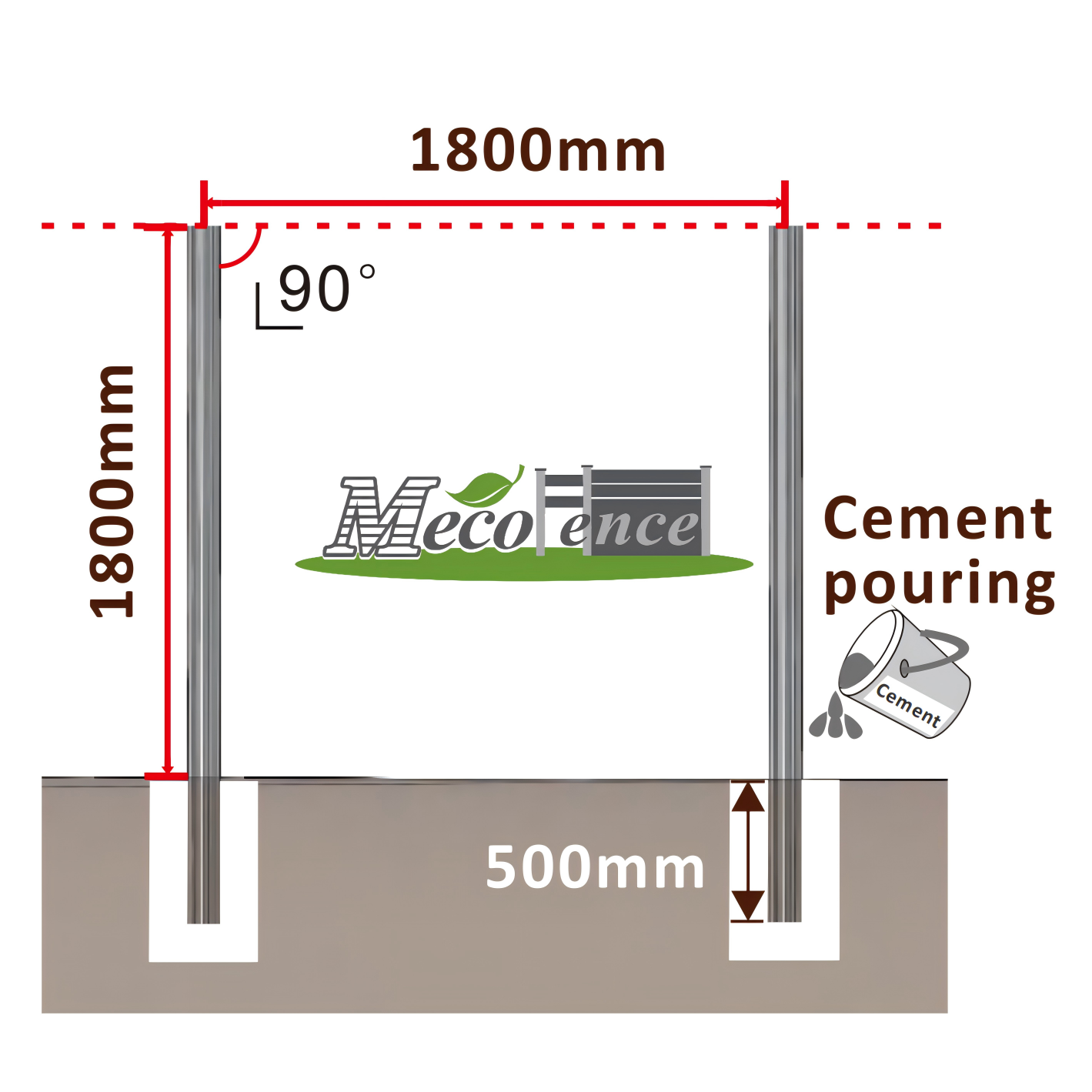
Whenever possible, reinforce your fence posts with steel or aluminum cores. These reinforcements add strength to your fence, helping it withstand wind pressure without bending or breaking.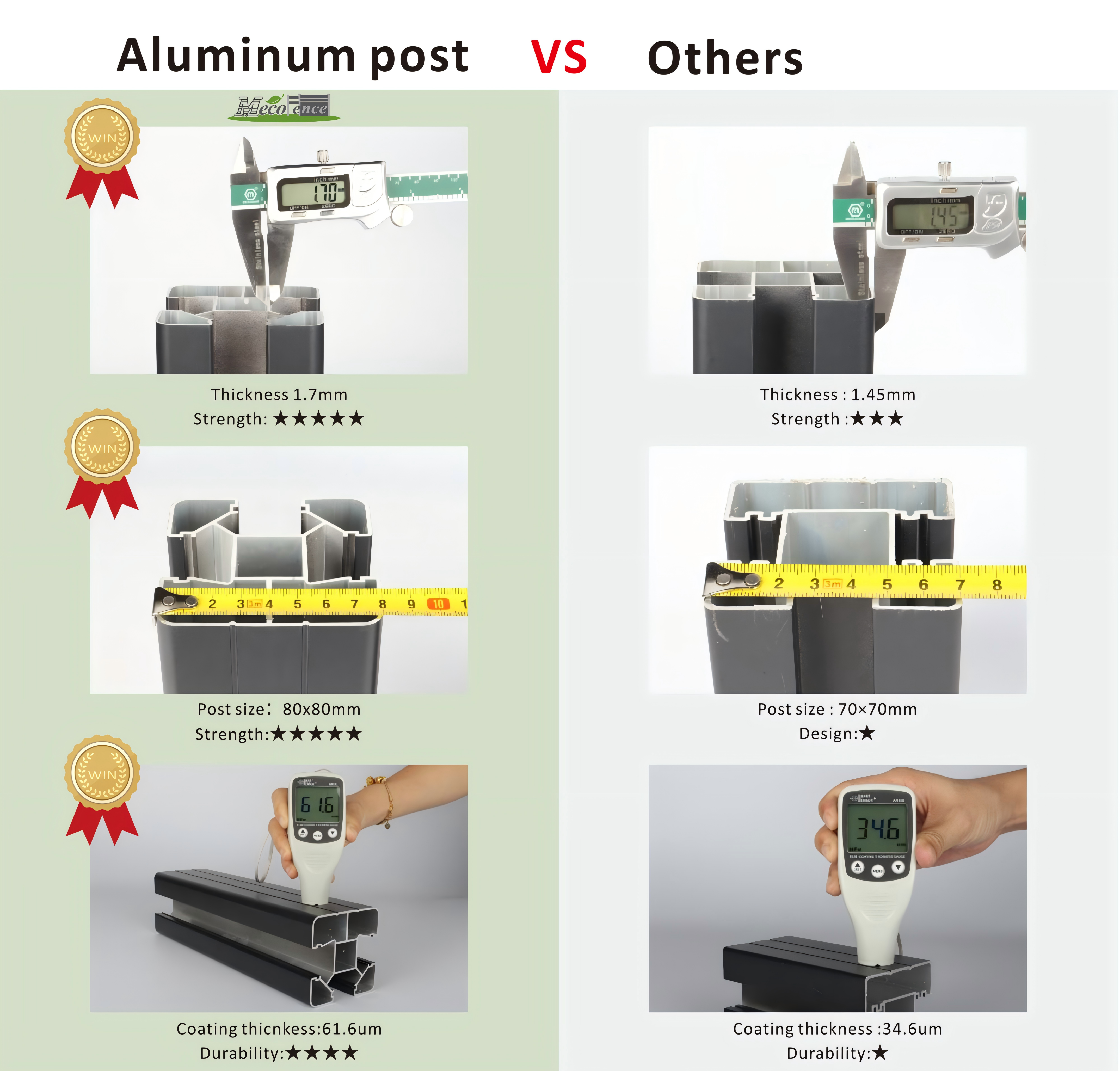
In windy areas, consider reducing the spacing between your fence posts to about 6 feet, rather than the standard 8 feet. This tighter spacing helps distribute wind pressure more evenly, making your fence less likely to collapse.
Ensure that all fence panels and rails are securely attached to the posts using strong, weather-resistant fasteners. Weak or loose connections can cause parts of your fence to come apart during high winds.
For the best wind resistance, consider driving your posts into the ground rather than setting them in concrete. Driven posts allow for a bit of give, which can absorb the force of wind gusts more effectively than rigid concrete-set posts.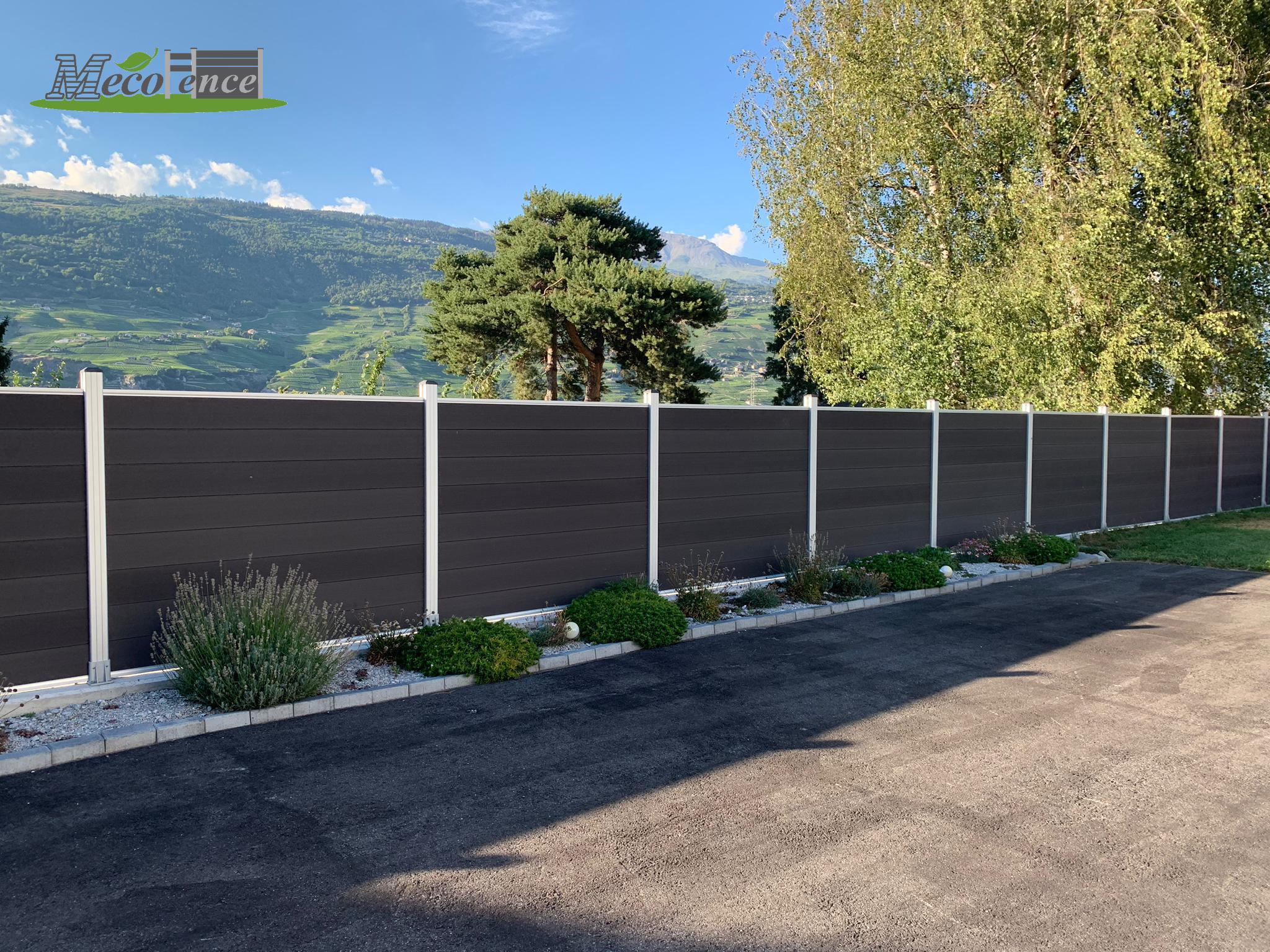
At MecoFence, we’re dedicated to creating composite fences that are not only stylish but also built to last. Our wind-resistant designs, combined with high-quality materials and smart installation methods, ensure that your fence can stand strong through storms, high winds, and anything else nature throws your way.
Whether you’re dealing with hurricane-force winds or just want peace of mind knowing your fence will stay standing, MecoFence has you covered. Contact us today to learn more about our wind-resistant composite fencing solutions and find out how we can help you build a fence that truly lasts.(Various design for your fence market)